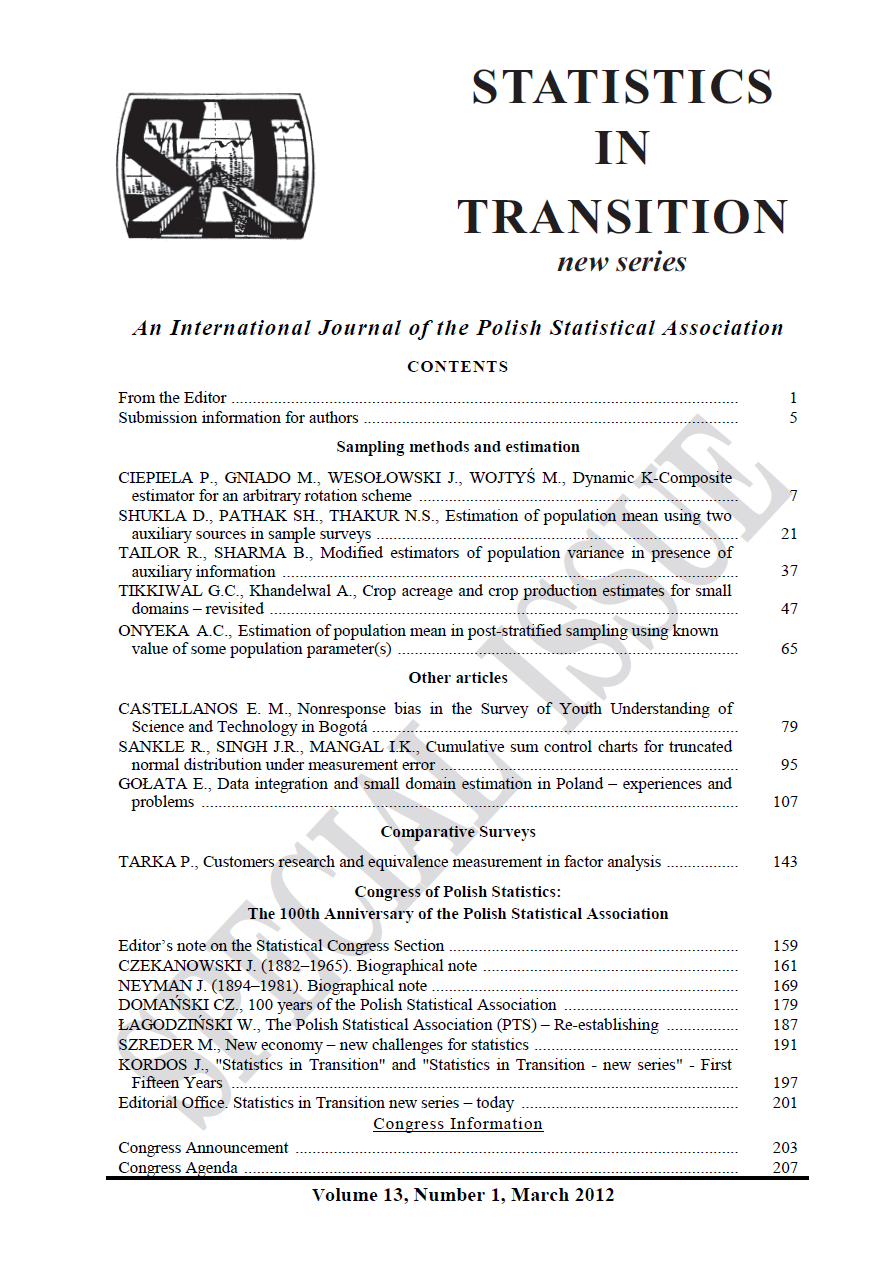ARTICLE
ABSTRACT
This paper proposes estimator of population variance using information on known parameters of auxiliary variable. The variances of the proposed estimators are obtained. It has been shown that using modified sampling fraction the proposed estimators are more efficient than the usual unbiased estimator of population variance and usual ratio estimator for population variance under certain given conditions. Empirical study is also carried out to demonstrate the merits of the proposed estimators of population variance over other estimators considered in this paper
KEYWORDS
Finite population variance, Bias, Mean squared error Auxiliary information and Efficiency
REFERENCES
CEBRIAN, A.A. and GARCIA, R.M. (1997). Variance estimation using auxiliary information. An almost unbiased multivariable ratio estimator. Metrika, 45, 171-178.
COCHRAN, W.G. (1977). Sampling Techniques. Third U. S. Edition. Wiley Eastern Limited, 325.
DAS, A.K. and TRIPATHI T.P. (1978). Use of auxiliary information in estimating the finite population variance. Sankhya, C, 40, 139-148.
GARCIA, M. RUEDA and CEBRIAN, A.A. (1996). Repeated substitution method. The ratio estimator of the population variance. Metrika, 43, 101-105.
ISAKI, C.T. (1983). Variance estimation using auxiliary information, Journal of the American Statistical Association 78, 117-123.
KADILAR, C. and CINGI, H. (2006). Ratio estimators for population variance in simple and stratified sampling, Applied Mathematics and Computation 173, 1047–1058, 2006.
KADILAR, C. and CINGI, H. (2006). Improvement in variance estimation using auxiliary information, Hacettepe Journal of Mathematics and Statistics 35 (1), 111–115.
MURTHY, M.N. (1967). Sampling theory and methods, statistical publishing society, Calcutta.
SINGH, H. P. and TAILOR, R. (2003). Use of known correlation coefficient in estimating the finite population mean, “Statistics in Transition”, 6, 555-560.
SINGH, S. and JOARDER, A.H. (1998). Estimation of finite population variance using random non-response in surveys sampling. Metrika,47, 241-249.
SINGH, H.P. UPADHYAYA, L.N. NAMJOSHI, U.D. (1988). Estimation of finite population variance, Current Science 57, 1331–1334.
SINGH, H.P. and SINGH, R. (2003). Estimation of variance through regression approach in two phase sampling. Alig. Jour. Stat., 23, 13-30.
SRIVASTAVA, S.K. AND JHAJJ H.S. (1980). A class of estimators using auxiliary information for estimating finite population variance. Sankhya , C, 42, 87-96.
UPADHYAYA, L.N. AND SINGH, H.P. (1983). Use of auxiliary information in the estimation of population variance. Mathematical forum, 4, 2, 33-36.
UPADHYAYA, L.N. and SINGH, H.P. (2006). Almost unbiased ratio and product-type estimators of finite population variance in sample surveys, Statist. in Transi.,7 5, 1087–1096
